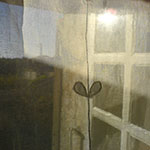Euroacademia Conferences
 Europe Inside-Out: Europe and Europeanness Exposed to Plural Observers (9th Edition) April 24 - 25, 2020
Europe Inside-Out: Europe and Europeanness Exposed to Plural Observers (9th Edition) April 24 - 25, 2020 Identities and Identifications: Politicized Uses of Collective Identities (9th Edition) June 12 - 13, 2020
Identities and Identifications: Politicized Uses of Collective Identities (9th Edition) June 12 - 13, 2020 8th Forum of Critical Studies: Asking Big Questions Again January 24 - 25, 2020
8th Forum of Critical Studies: Asking Big Questions Again January 24 - 25, 2020 Re-Inventing Eastern Europe (7th Edition) December 13 - 14, 2019
Re-Inventing Eastern Europe (7th Edition) December 13 - 14, 2019 The European Union and the Politicization of Europe (8th Edition) October 25 - 26, 2019
The European Union and the Politicization of Europe (8th Edition) October 25 - 26, 2019 Identities and Identifications: Politicized Uses of Collective Identities (8th Edition) June 28 - 29, 2019
Identities and Identifications: Politicized Uses of Collective Identities (8th Edition) June 28 - 29, 2019 The European Union and the Politicization of Europe (7th Edition) January 25 - 26, 2019
The European Union and the Politicization of Europe (7th Edition) January 25 - 26, 2019 7th Forum of Critical Studies: Asking Big Questions Again November 23 - 24, 2018
7th Forum of Critical Studies: Asking Big Questions Again November 23 - 24, 2018 Europe Inside-Out: Europe and Europeanness Exposed to Plural Observers (8th Edition) September 28 - 30, 2018
Europe Inside-Out: Europe and Europeanness Exposed to Plural Observers (8th Edition) September 28 - 30, 2018 Identities and Identifications: Politicized Uses of Collective Identities (7th Edition) June 14 - 15, 2018
Identities and Identifications: Politicized Uses of Collective Identities (7th Edition) June 14 - 15, 2018
Translocal Dynamics of Contact. Reactions to Steven Cohen’s Performances in Africa and Europe
-
-

-
Presentation speakers
- Melanie Klein, Free University Berlin, Germany
Abstract:
Performance art positions itself as potentially contestable, democratic and open to and curious about disagreement. Its ephemeral and often erratic character seems to be exemplary for any description or scrutiny of the dynamics of contact. Most of these contacts of the performer’s body, identity and intention with an audience in a specific space and time have occurred within the ambit of a genuinely art-friendly community – galleries, museums or city centres. Here, artists have challenged boundaries of perception and taste, control and behaviour. The audience’s reaction has thus been able to be read as indicator for societal orientations – most impressively conducted in Marina Abramović’s latest work “The artist is present” in 2010 and the accompanying photographs of Marco Anelli which evoke a society of highly individualized faces and emotions. Yet, rarely has performance art been so consequently conveyed to different audiences and localities as in the work of South African artist Steven Cohen. In Steven Cohen’s work the rather positive connotation and dialogical structure of contact is saturated with ingredients of confrontation when he transfers “Eurocentric drag” to the African province or “Patriotic drag” as the Jewish princess Menorah to a white right-wing rally in Pretoria. Apart from the contact that happens on his very body – when Cohen applies to it objects of various provenance and not only undermines with them hegemonic images of masculinity but also bristles against conventional modes of travesty – he exposes his bodily image to its seemingly antithetic reality. The responses to Cohen’s performances extend from the objectification of his body through ambivalent desire, hate and disgust to the body’s glorification through amazement and joy. In my paper I would like to investigate first the audience’s reactions to his projects “Chandelier” (2001-2002) and “Limping into the African renaissance” (1999-2000) both in Africa and Europe and with it the translocal dynamics that contact entails. I would like to ask if different reactions occur when Cohen, dressed as a chandelier, enters an informal settlement in Johannesburg or stages the same performance at a festival in Annecy and how these reactions not only reflect unexpected statements on an audience’s affective potential but also the oscillation of Cohen’s body when being exposed as “spectacularly white” or the “proximate other” in respective localities. I secondly would like to ask about the relationship between authenticity and theatricality of performance art which in Cohen’s work seem to merge when he, on the one hand, declares that he disguises himself “in order to be able to express” himself and on the other hand was criticized by the gay community for “presenting his queer self in such a monstrous fashion”. I would like to argue that the expression of such a monstrous fashion can be perceived as both authentic and theatrical at the same time. -
Related Presentations


















